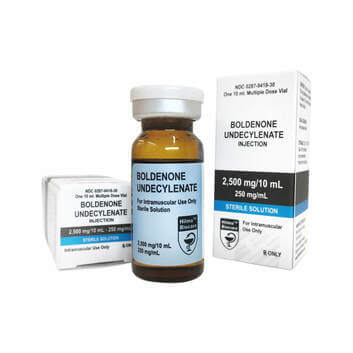Boldenone History
A Rich History in the Field of Performance Enhancing Drugs
Even though those looking for equipoise for sale in the modern aesthetic community tend to belong to a fairly niche crowd compared to the millions of people looking for testosterone and its other popular “derivative” steroids; this substance is actually the very first testosterone derivative steroid ever released. Being manufactured for the first time in 1949, this means it actually pre-dates dianabol (one of the oldest steroids of this type in its own right, and often mistakenly believed to be the first.). As such, we find ourselves faced with a substance that has a rich history, and a long track record.
As with the majority of pharmaceutical grade substances of this type, this product was never engineered for aesthetically charged use. It did see some use within a medical capacity as a result of the first “human” grade variant being produced by Ciba in the early 1950’s (where it went under the name “Parenabol”), however; it was “officially” discontinued for this purpose by the end of the 70’s.

Boldenone Undecylenate
With the above statement in mind, it is clear then that this product was never actually designed for human use. We can determine this amongst other elements by the equipoise definition alone, which is a derivative of the word “equine.” To recall our opening statements, this product was actually designed for veterinary use and the promotion of optimum vitality in horses and other livestock (the use of equipoise for horses and subsequent results can be reviewed here)
As such, when “official” production ceased in the late 70’s, the only way an individual could get their hands on this product was either through veterinary surgeries, or through an underground laboratory. It was a company named “Squibb” that first introduced the equipoise trade name by which boldenone is now commonly referred to. This trade name was later secured by Fort Dodge Animal Health, who still own the name to this day.
Interestingly, the veterinary grade and unofficial “human” grade variants of this item tend to differ greatly in terms of concentration quantity. This is largely due to the difference between intended medicinal use and the “interpreted” use for aesthetic development. We’ll soon look into this aspect in further detail, but it’s something you need to be acutely aware of as it can make a huge difference in regards to administration.
A Horse Named Equipoise
Before Equipoise the steroid, there was Equipoise the horse. Born in 1928, he was by all accounts an extraordinarily handsome horse, sired by two champion thoroughbred racehorses before him (Swinging and Broomstick). Equipoise became to be known as “The Chocolate Soldier” due to the unique colour of his coat when wet, and for the near military precision of his racing efforts.
A livery/chestnut color, Equipoise was not a large horse. But he showed promise early, easily dominating his first two races. His third race however was a disaster. Carrying a new jockey (Sonny Workman), he stumbled at the start, throwing Workman to the ground and leaving him behind.
Workman quickly forgave The Chocolate Soldier though and went on to become his regular jockey. Reminiscing about his most memorable ride on top of the champion thoroughbred, he wrote:
“I believe the Pimlico Futurity to be (Equipoise’s) greatest race as a 2-year-old. In this race he was practically left at the post, at least twelve lengths last going into the first turn. I nor no one else imagined that he had a chance. At about the half-mile pole I recognized Twenty Grand about a length to a length and a half in front of me and realizing that he was one of the horses to beat in the race, I was given new hope. The mud was flying and I could vision no chance of driving through near the rail, so I had to circle on the outside. Twenty Grand, by the way, got through on the inside. Equipoise, Twenty Grand, and Mate finished three heads on the post in what I believe was one of the greatest races ever run by a 2-year-old. The entire trip was a shower of mud and I am convinced that Equipoise was unable to see what was in front of him—the supreme courage and those never-say-die tactics which were to be so often exemplified throughout his career made the victory his. When he was returned to the stable, Mr. Hopkins discovered that he had lost THREE plates during the race.”
Despite niggling hoof problems throughout his career and a kidney ailment that almost killed him, Equipoise became a well-known champion, second in popularity only to the legendary horse ‘Man o’ War’.
By the time his career ended in 1935, he boasted 29 wins from 51 starts and when he won, he would always dominate his rivals to win by several lengths. Equipoise set a world record for the fastest mile ever ran (1:34). In total, he won $338,610 in prize money, ranking as the second top earner in the world at that time.
After passing away in 1938 following an intestine infection, Equipoise was autopsied and found to have a much larger than normal heart, likely caused by a lifetime of high endurance training and intense competition. He was inducted into the racing hall of fame in 1957.
The popular anabolic steroid Equipoise wasn’t formally patented until 1949, and rebranded as Equipoise in the 1960s, so it’s unlikely The Chocolate Soldier ever benefited from its effects. However, given that Boldenone is commonly applied to horses and exhibits a pronounced effect on lean bodyweight and general disposition of the animal, it’s a fair assumption to make that the popularity of the thoroughbred Equipoise influenced Squibb, the company who introduced the agent into the veterinary market.
Interestingly, heroin was the performance enhancing drug of choice in the racing industry in the 1930s as it was known to trigger the ancient equine flight response. As the horse felt an unnatural sleepiness creeping into his nervous system (similar to the shock caused by a fatal bite from a carnivore), the horse would startle and run without reserve. Let loose on a racetrack, the horse would outrun any normal inhibition.

 “I believe the Pimlico Futurity to be (Equipoise’s) greatest race as a 2-year-old. In this race he was practically left at the post, at least twelve lengths last going into the first turn. I nor no one else imagined that he had a chance. At about the half-mile pole I recognized Twenty Grand about a length to a length and a half in front of me and realizing that he was one of the horses to beat in the race, I was given new hope. The mud was flying and I could vision no chance of driving through near the rail, so I had to circle on the outside. Twenty Grand, by the way, got through on the inside. Equipoise, Twenty Grand, and Mate finished three heads on the post in what I believe was one of the greatest races ever run by a 2-year-old. The entire trip was a shower of mud and I am convinced that Equipoise was unable to see what was in front of him—the supreme courage and those never-say-die tactics which were to be so often exemplified throughout his career made the victory his. When he was returned to the stable, Mr. Hopkins discovered that he had lost THREE plates during the race.”
“I believe the Pimlico Futurity to be (Equipoise’s) greatest race as a 2-year-old. In this race he was practically left at the post, at least twelve lengths last going into the first turn. I nor no one else imagined that he had a chance. At about the half-mile pole I recognized Twenty Grand about a length to a length and a half in front of me and realizing that he was one of the horses to beat in the race, I was given new hope. The mud was flying and I could vision no chance of driving through near the rail, so I had to circle on the outside. Twenty Grand, by the way, got through on the inside. Equipoise, Twenty Grand, and Mate finished three heads on the post in what I believe was one of the greatest races ever run by a 2-year-old. The entire trip was a shower of mud and I am convinced that Equipoise was unable to see what was in front of him—the supreme courage and those never-say-die tactics which were to be so often exemplified throughout his career made the victory his. When he was returned to the stable, Mr. Hopkins discovered that he had lost THREE plates during the race.”
